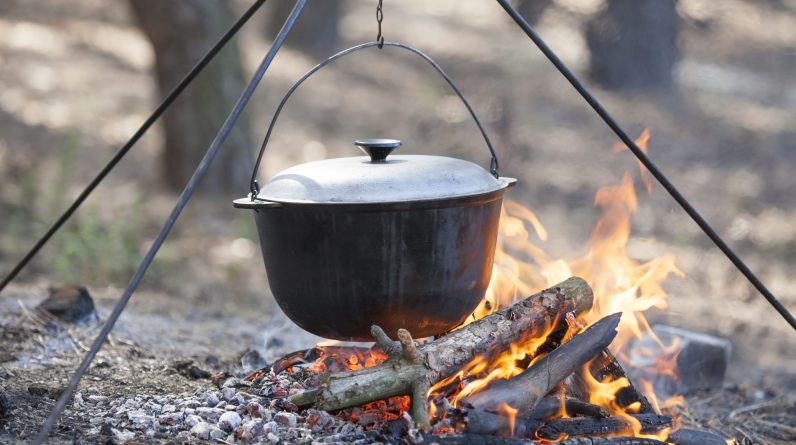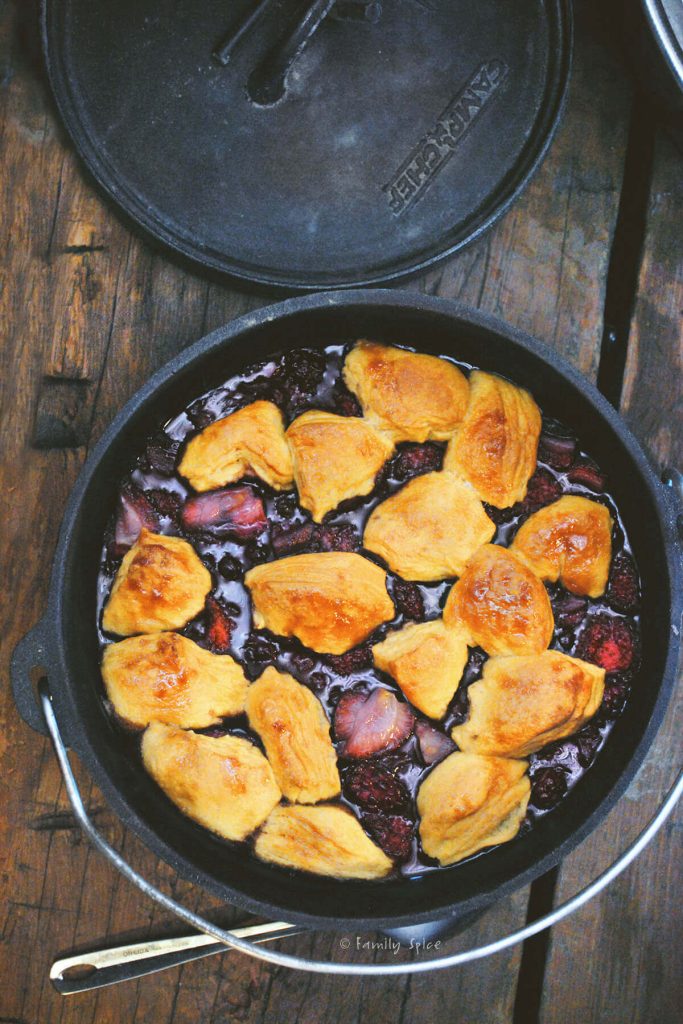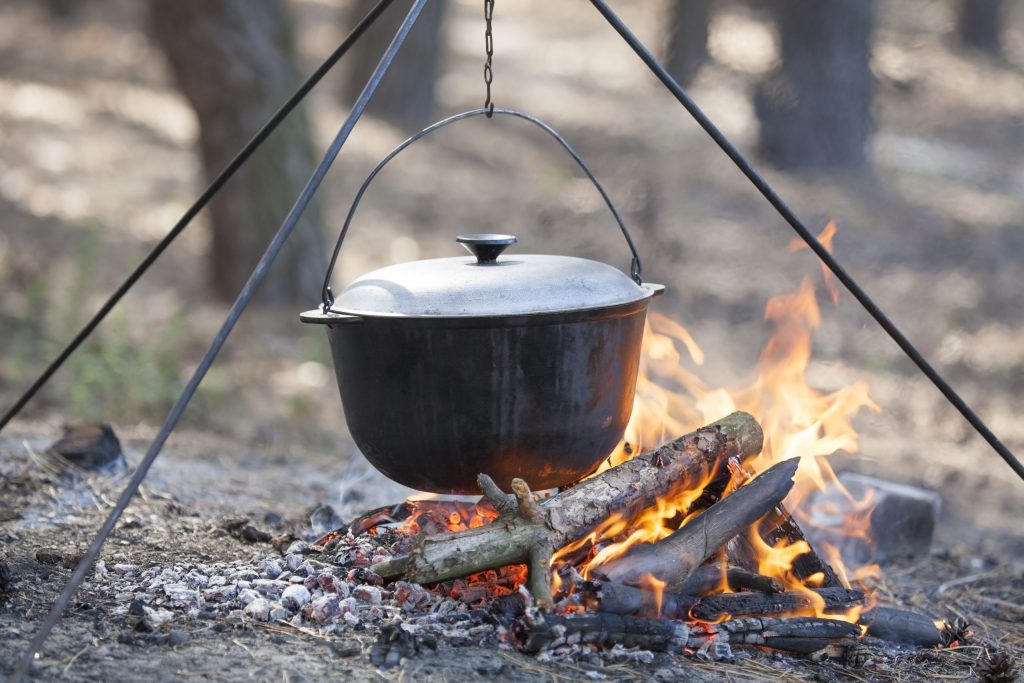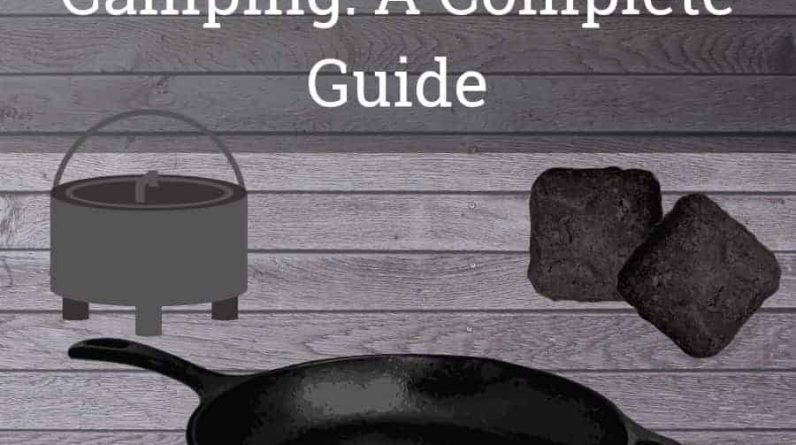
In this article, we will explore the special considerations you need to keep in mind when cooking with a Dutch oven over a campfire. You will learn about the importance of seasoning your Dutch oven, the proper way to handle the heat and coals, and how to maintain an even temperature while cooking. Additionally, we will discuss some handy tips to ensure your campfire cooking experience with a Dutch oven is both safe and delicious. So, let’s get started and make your campfire meals even more amazing!

This image is property of campfiresandcastiron.com.
Special Considerations for Cooking with a Dutch Oven over a Campfire
Cooking with a Dutch oven over a campfire can be a rewarding and enjoyable experience. However, there are some special considerations to keep in mind to ensure a successful cooking session. In this article, we will explore the key factors to consider when using a Dutch oven over a campfire, from choosing the right Dutch oven to monitoring and maintaining the cooking process.
Choosing the Right Dutch Oven
Material of the Dutch Oven
When selecting a Dutch oven for campfire cooking, it is essential to consider the material it is made of. Traditional Dutch ovens are made of cast iron, which is known for its excellent heat retention and even heat distribution. Cast iron Dutch ovens are durable and can withstand high temperatures, making them ideal for campfire cooking. Additionally, they add a unique flavor to the food due to their seasoning.
Size of the Dutch Oven
Another crucial factor to consider is the size of the Dutch oven. The size you choose will depend on the number of people you plan to cook for and the type of meals you wish to prepare. A larger Dutch oven is suitable for cooking for a large group, while a smaller one is more appropriate for individual servings or smaller gatherings. It is essential to ensure that the Dutch oven fits comfortably on your campfire cooking setup.
Lid with a Handle
The lid of the Dutch oven plays a significant role in the cooking process. It is essential to choose a Dutch oven with a sturdy lid that has a handle. The lid helps retain heat and moisture, allowing food to cook evenly. The handle on the lid is necessary for safe and easy handling, especially when the Dutch oven is hot. Make sure the handle is heat-resistant and securely attached to the lid to prevent accidents.

This image is property of familyspice.com.
Preparing the Dutch Oven
Seasoning the Dutch Oven
Before using a new cast iron Dutch oven for the first time, it must be seasoned. Seasoning involves applying a thin layer of oil to the interior and exterior of the Dutch oven and heating it to create a polymerized coating. This process helps prevent rust and improves the non-stick properties of the Dutch oven. To season the Dutch oven, wash it with warm water and mild soap, dry it thoroughly, and apply a thin layer of oil. Place the Dutch oven upside down on the campfire or in an oven and heat it for about an hour. Allow it to cool before storing.
Properly Heating the Dutch Oven
When cooking with a Dutch oven over a campfire, it is crucial to heat it properly. Start by preheating the Dutch oven on the campfire for about 10-15 minutes before adding any ingredients. Heating the Dutch oven before cooking ensures that the food will cook evenly and reduces the chances of food sticking to the bottom. Adjust the heat by moving the Dutch oven closer to or farther away from the flames in order to maintain the desired temperature throughout the cooking process.
Selecting the Campfire Location
Finding a Suitable Cooking Spot
Choosing the right campfire location is critical for successful Dutch oven cooking. Look for a flat and level area that is away from any low-hanging branches or flammable materials. Ensure that the cooking spot is a safe distance from your camping area and other people. It is also advisable to check with local authorities or follow any regulations in place regarding campfire locations.
Clearing the Cooking Area
Before setting up your campfire and Dutch oven, it is essential to clear the cooking area of any debris or flammable materials. Remove dry leaves, grass, and twigs from the immediate vicinity. Create a perimeter around the cooking area free from any potential fire hazards. This step is crucial to prevent accidental fires and ensure a safe cooking environment.

This image is property of cdn.outsideonline.com.
Building the Campfire
Arranging Firewood
Building a campfire with the right arrangement of firewood is essential for successful Dutch oven cooking. Start by arranging a base of large logs or rocks in a circular shape. This base provides stability for the fire and helps prevent it from spreading. Place smaller sticks and twigs on top of the base in a teepee or pyramid shape. This arrangement allows for proper airflow and ensures that the fire will catch.
Creating a Stable Fire Base
To ensure a stable cooking surface for your Dutch oven, it is important to create a stable fire base. It is recommended to use a metal grate or a fire ring specifically designed for cooking. These accessories provide a sturdy surface to place your Dutch oven on and help distribute heat more evenly.
Starting the Campfire
Gathering Firewood and Kindling
Before starting the campfire, gather an adequate amount of firewood and kindling. Firewood should be dry and of various sizes to maintain a steady heat throughout the cooking process. Kindling, such as small twigs and sticks, helps ignite the fire and keep it going. Avoid using green or wet wood, as it will produce more smoke and less heat.
Using Fire Starters
To ignite the campfire, you can use various types of fire starters. Commercial fire starters, such as fire starter cubes or sticks, are readily available and easy to use. You can also use natural alternatives like dry leaves, newspaper, or birch bark to get the fire going. Place the fire starters at the base of the firewood pyramid and light them. Gradually add more firewood and kindling as the fire grows.

This image is property of www.tasteofhome.com.
Positioning the Dutch Oven
Setting up a Cooking Tripod
A cooking tripod is a practical and versatile tool for positioning a Dutch oven over a campfire. It consists of three legs that provide stability and a chain or hook to adjust the height of the Dutch oven. Place the tripod over the campfire, adjusting the legs for stability and ensuring it is level. Hang the Dutch oven from the chain or hook and adjust the height based on your cooking needs.
Ensuring Proper Ventilation
Proper ventilation is crucial when using a Dutch oven over a campfire. The Dutch oven should have enough space around it to allow hot air and smoke to escape. This ensures that the food cooks evenly and does not become smoky. Avoid placing the Dutch oven too close to the flames or covering it with excessive amounts of firewood.
Choosing the Right Cooking Techniques
Using Different Heat Sources
When cooking with a Dutch oven over a campfire, you have the option to use various heat sources. You can cook directly over the flames by placing the Dutch oven on a hot bed of coals, or you can use the radiant heat produced by the fire. Alternatively, you can use a combination of both methods for optimal cooking results. Experiment with different heat sources to find the technique that works best for your recipes.
Understanding Temperature Control
Maintaining a consistent temperature while cooking with a Dutch oven over a campfire can be challenging. It is important to understand how to control the heat to prevent burning or undercooking your food. Adjust the distance between the Dutch oven and the flames to regulate the temperature. You can also control the temperature by adding or removing firewood from the campfire to increase or decrease the heat generated.

This image is property of alwaysonliberty.com.
Adding and Adjusting Ingredients
Prepping Ingredients in Advance
When cooking with a Dutch oven over a campfire, it is beneficial to prep and pre-cook ingredients in advance. Chopping vegetables, marinating meats, and pre-cooking certain ingredients like rice or pasta can save time and ensure that all components of the dish cook evenly. Additionally, preparing ingredients in advance allows you to focus on the cooking process and adjust the heat as needed.
Modifying Cooking Times and Techniques
Cooking with a Dutch oven over a campfire requires some adjustments compared to traditional stovetop or oven cooking. The heat source and temperature control may vary, so it is important to modify cooking times and techniques accordingly. Keep a close eye on the cooking process, and be prepared to make adjustments if necessary. Experimenting and adapting recipes to campfire cooking will help you develop your own unique flavors and techniques.
Monitoring and Maintaining the Cooking Process
Checking and Adjusting Heat Levels
Throughout the cooking process, it is crucial to regularly check and adjust the heat levels of your campfire and Dutch oven. Keep an eye on the flames and embers to ensure a steady heat supply. If the heat is too high, move the Dutch oven farther away from the flames or adjust the amount of firewood. If the heat is too low, add more firewood or adjust for a closer distance.
Rotating and Stirring the Food
To ensure even cooking, it is important to rotate and stir the food inside the Dutch oven periodically. Most Dutch ovens have a flat bottom, which can cause some areas to heat faster than others. By rotating the Dutch oven and stirring the contents, you can distribute the heat evenly and prevent hot spots or burning.
Conclusion
Cooking with a Dutch oven over a campfire can be a delightful experience. By considering the material and size of the Dutch oven, properly preparing it, selecting the right campfire location, building a stable fire base, and using appropriate cooking techniques, you can achieve delicious results. Remember to monitor and maintain the cooking process by checking and adjusting heat levels, rotating the Dutch oven, and stirring the food. With these special considerations in mind, you are ready to embark on a culinary adventure in the great outdoors. Happy campfire cooking!

